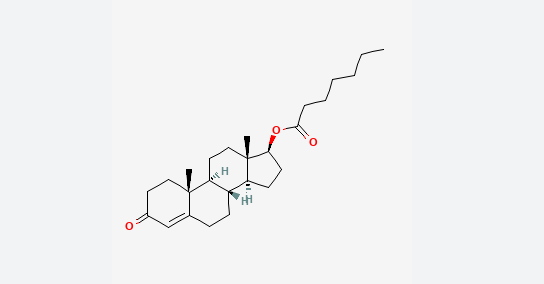Testosterone, a key hormone in the human body, plays a crucial role in various physiological functions, including muscle development, bone density, and overall well-being. Testosterone replacement therapy (TRT) is a common approach for individuals with low testosterone levels. Two of the most widely used testosterone esters in TRT are Testosterone Enanthate and Testosterone Cypionate. This guide explores the differences between these two testosterone variants to help individuals make informed decisions about their hormone replacement therapy.
Chemical Structure
Testosterone Enanthate and Testosterone Cypionate are both long-acting esters of testosterone, meaning they have extended release times in the body. The primary difference lies in their chemical structures. Testosterone Enanthate has a seven-carbon ester chain, while Testosterone Cypionate has an eight-carbon chain. This slight variation influences their pharmacokinetics.
Half-Life
The ester chain length impacts the half-life of these testosterone esters. Testosterone Enanthate has a slightly shorter half-life compared to Testosterone Cypionate. While Testosterone Enanthate typically has a half-life of around 4.5 days, Testosterone Cypionate’s half-life is approximately 8 days. This distinction can affect the frequency of injections required during TRT.
Injection Frequency
Due to their differing half-lives, individuals using Testosterone Enanthate may need more frequent injections to maintain stable testosterone levels compared to those using Testosterone Cypionate. Testosterone Enanthate is often administered every 7 to 10 days, while Testosterone Cypionate may be injected every 10 to 14 days. The injection frequency can influence the convenience and adherence to the TRT regimen.
Hormone Levels and Stability
The choice between Testosterone Enanthate and Testosterone Cypionate is often based on individual preferences and lifestyle factors. Some individuals prefer the more stable hormone levels achieved with Testosterone Cypionate due to its longer half-life, while others appreciate the flexibility of more frequent injections with Testosterone Enanthate.
Availability and Cost
Both Testosterone Enanthate and Testosterone Cypionate are widely available and commonly prescribed for TRT. However, regional availability and cost may vary. In some regions, one ester may be more prevalent or cost-effective than the other. It’s essential to consider these factors when making treatment decisions.
Conversion to Testosterone
Once injected, both Testosterone Enanthate and Testosterone Cypionate undergo hydrolysis to release free testosterone into the bloodstream. The rate of hydrolysis is influenced by the ester chain length, contributing to the differences in their pharmacokinetics.
Potential Side Effects
The potential side effects of Testosterone Enanthate and Testosterone Cypionate are generally similar, given that they both release testosterone into the body. Common side effects may include acne, changes in mood, and fluctuations in libido. Monitoring for potential side effects and adjusting dosage or ester type may be necessary during TRT.
The choice between Testosterone Enanthate and Testosterone Cypionate in testosterone replacement therapy is a nuanced decision that should consider individual preferences, lifestyle factors, and treatment goals. Working closely with a healthcare professional is crucial to determine the most suitable option based on an individual’s unique physiology and preferences. Both esters are effective in restoring testosterone levels and improving the well-being of individuals with testosterone deficiency, and the decision between them is often a matter of personal preference and convenience.
This article was written by a peptide professional from Domestic Peptides. Looking for High-Quality Peptides and Research Chemicals for sale? Well, look no further. Welcome to Domestic Peptides where you’ll find a huge selection of Research Peptides for sale and Research Chemicals for Sale, all made in the USA.


